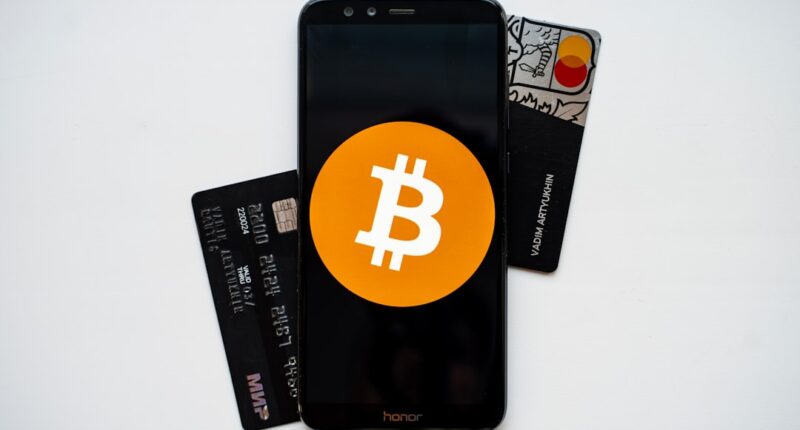Non-fungible tokens (NFTs) have taken the digital world by storm, revolutionizing the way we buy, sell, and trade digital assets. NFTs are unique digital tokens that represent ownership of a specific item or piece of content, such as artwork, music, videos, and even virtual real estate. Unlike cryptocurrencies like Bitcoin or Ethereum, which are interchangeable and have the same value, NFTs are one-of-a-kind and cannot be exchanged on a like-for-like basis. The Ethereum blockchain has become the go-to platform for creating and trading NFTs due to its smart contract functionality, which allows for the creation of unique tokens with specific attributes and ownership details. This has led to a booming NFT market, with artists, creators, and collectors flocking to Ethereum to participate in this new digital economy.
NFTs have gained popularity for their ability to provide proof of ownership and authenticity for digital assets, solving the problem of digital piracy and allowing creators to monetize their work in new ways. The Ethereum blockchain, with its decentralized nature and robust infrastructure, has become the perfect environment for NFTs to thrive. With Ethereum’s support for smart contracts, creators can easily mint their own NFTs without the need for intermediaries, making the process more accessible and cost-effective. As a result, the Ethereum blockchain has become the epicenter of the NFT revolution, attracting artists, musicians, game developers, and other creators who are eager to explore the potential of this new technology.
Creating NFTs on the Ethereum Blockchain
Creating NFTs on the Ethereum blockchain is a straightforward process that involves using smart contracts to tokenize digital assets. Smart contracts are self-executing contracts with the terms of the agreement between buyer and seller directly written into code. This allows for the automatic minting and transfer of NFTs without the need for a middleman. To create an NFT on Ethereum, creators can use various platforms and marketplaces that offer NFT minting services, such as OpenSea, Rarible, and Mintable. These platforms provide user-friendly interfaces that guide creators through the process of uploading their digital assets, setting attributes for their NFTs, and minting them on the Ethereum blockchain.
Once the NFT is minted, it becomes a unique token on the Ethereum blockchain with a specific owner and metadata that describes its attributes. Creators can then list their NFTs for sale on marketplaces or auction them off to the highest bidder. The process of creating NFTs on Ethereum has opened up new opportunities for artists and creators to monetize their work and engage with their fans in innovative ways. With the ability to tokenize any digital asset, from artwork and music to virtual real estate and in-game items, Ethereum has become a playground for creative expression and entrepreneurship in the digital realm.
Trading NFTs on the Ethereum Blockchain
Trading NFTs on the Ethereum blockchain has become a vibrant and dynamic marketplace where collectors and enthusiasts can buy, sell, and exchange unique digital assets. Ethereum’s decentralized nature allows for peer-to-peer transactions without the need for intermediaries, giving users full control over their NFTs and enabling direct interaction between buyers and sellers. Marketplaces like OpenSea, Rarible, and Foundation have emerged as popular platforms for trading NFTs on Ethereum, offering a wide range of digital assets for collectors to browse and purchase.
The process of trading NFTs on Ethereum involves browsing through various collections, placing bids on desired items, or purchasing them outright at a set price. Once a transaction is completed, the ownership of the NFT is transferred to the buyer’s Ethereum wallet, providing them with proof of ownership and access to the digital asset. The ability to trade NFTs on Ethereum has created new opportunities for collectors to build their digital art collections, invest in rare digital assets, and participate in a burgeoning market that is redefining ownership in the digital age.
Ethereum News and Updates for NFT Creators and Traders
Ethereum continues to be at the forefront of innovation in the NFT space, with ongoing developments and updates that cater to the needs of creators and traders. The Ethereum community is constantly working on improving the infrastructure for NFTs, with initiatives such as EIP-721 and EIP-1155 proposing standards for creating and managing NFTs on the blockchain. These standards aim to enhance interoperability between different NFT platforms and provide a more seamless experience for creators and traders.
In addition to technical improvements, Ethereum is also exploring scalability solutions such as layer 2 scaling solutions and Ethereum 2.0 upgrades to address network congestion and high gas fees that have been a concern for NFT creators and traders. These developments are crucial for ensuring a smooth and efficient experience for users engaging with NFTs on the Ethereum blockchain.
Furthermore, Ethereum’s vibrant developer community continues to build new tools and applications that cater to the needs of NFT creators and traders. From decentralized finance (DeFi) integrations to innovative marketplaces and social platforms dedicated to NFTs, Ethereum is constantly evolving to provide a rich ecosystem for digital creators and collectors.
Using ETH to Buy and Sell NFTs
Ethereum’s native cryptocurrency, Ether (ETH), plays a central role in buying and selling NFTs on the blockchain. When purchasing an NFT on Ethereum, buyers typically use ETH to place bids or buy items at set prices. Similarly, when selling an NFT, creators receive ETH as payment for their digital assets. This seamless integration of ETH into the NFT ecosystem provides liquidity and a familiar medium of exchange for participants in the marketplace.
The use of ETH in buying and selling NFTs also highlights the interconnectedness of different aspects of the Ethereum ecosystem. As one of the leading cryptocurrencies in the world, ETH serves as a foundational currency for transactions within the Ethereum network, including those involving NFTs. This integration not only provides utility for ETH but also reinforces its position as a key asset in the broader digital economy.
Crypto News and Trends in the NFT Space on Ethereum

The intersection of cryptocurrency trends and NFTs on Ethereum has led to exciting developments in the digital asset space. With growing interest from institutional investors and mainstream adoption of cryptocurrencies, there has been a surge in demand for NFTs as a new form of digital investment. This trend has led to high-profile sales of NFT artworks, collectibles, and virtual real estate, attracting attention from traditional art markets and investors looking to diversify their portfolios.
Moreover, the emergence of decentralized finance (DeFi) has brought about innovative ways to leverage NFTs as collateral for loans or liquidity in decentralized lending protocols. This integration of DeFi with NFTs has opened up new avenues for unlocking value from digital assets and creating financial opportunities for NFT holders.
In addition to financial trends, there has been a growing focus on environmental sustainability in the NFT space, with discussions around reducing the carbon footprint of NFT transactions on Ethereum. This has led to initiatives exploring eco-friendly alternatives such as layer 2 scaling solutions and proof-of-stake consensus mechanisms to address environmental concerns while maintaining the integrity of NFT transactions.
The Future of NFTs and Ethereum: What to Expect
Looking ahead, the future of NFTs on the Ethereum blockchain holds immense potential for further growth and innovation. As technology continues to evolve, we can expect advancements in scalability solutions that will address network congestion and high gas fees, making it more accessible for creators and traders to engage with NFTs on Ethereum.
Furthermore, we anticipate continued integration between DeFi and NFTs, leading to new financial products and services that leverage digital assets as collateral or investment vehicles. This convergence of DeFi with NFTs will create opportunities for unlocking liquidity in digital art collections and expanding financial inclusion in the digital asset space.
In addition, we foresee increased collaboration between traditional art markets and NFT platforms, leading to greater recognition and acceptance of digital art as a legitimate form of investment and expression. This convergence will bridge the gap between physical and digital art worlds, opening up new possibilities for artists and collectors alike.
Overall, the future of NFTs on Ethereum is bright, with ongoing developments that will continue to shape the landscape of digital ownership and creativity. As we move forward, we can expect an increasingly diverse ecosystem that caters to the needs of creators, traders, and enthusiasts alike, ushering in a new era of innovation in the digital asset space.
FAQs
What is an NFT?
An NFT, or non-fungible token, is a digital asset that represents ownership or proof of authenticity of a unique item or piece of content, such as artwork, music, videos, or collectibles, using blockchain technology.
How are NFTs created on the Ethereum blockchain?
NFTs are created on the Ethereum blockchain using smart contracts, which are self-executing contracts with the terms of the agreement between buyer and seller directly written into code. Creators can use various platforms and tools to create and deploy their NFTs on the Ethereum blockchain.
How are NFTs traded on the Ethereum blockchain?
NFTs are traded on the Ethereum blockchain through various online marketplaces and platforms that support the buying, selling, and auctioning of NFTs. Users can use cryptocurrency, such as Ether (ETH), to purchase NFTs and transfer ownership through the blockchain.
What is the process for buying and selling NFTs on the Ethereum blockchain?
The process for buying and selling NFTs on the Ethereum blockchain involves creating a digital wallet, funding it with cryptocurrency, finding a marketplace or platform to browse and purchase NFTs, and completing the transaction using a digital signature to transfer ownership of the NFT.
What are the benefits of using NFTs on the Ethereum blockchain?
Some benefits of using NFTs on the Ethereum blockchain include the ability to prove ownership and authenticity of digital assets, enable creators to monetize their work, provide a decentralized and transparent marketplace, and create new opportunities for digital ownership and collectibles.





